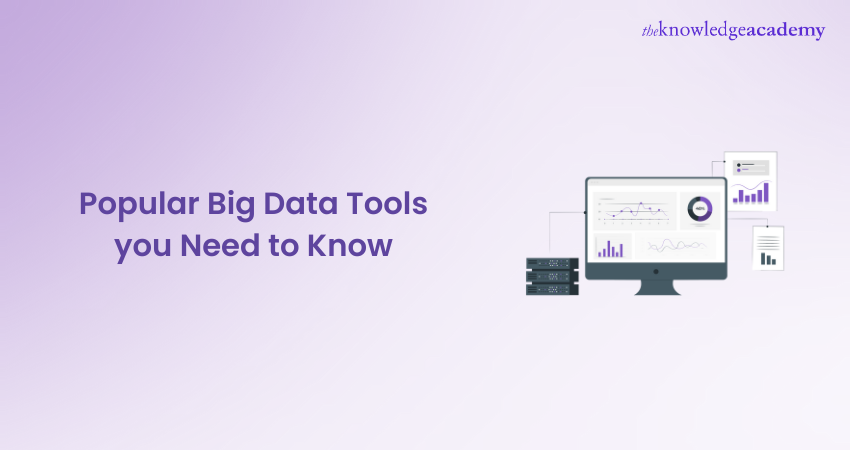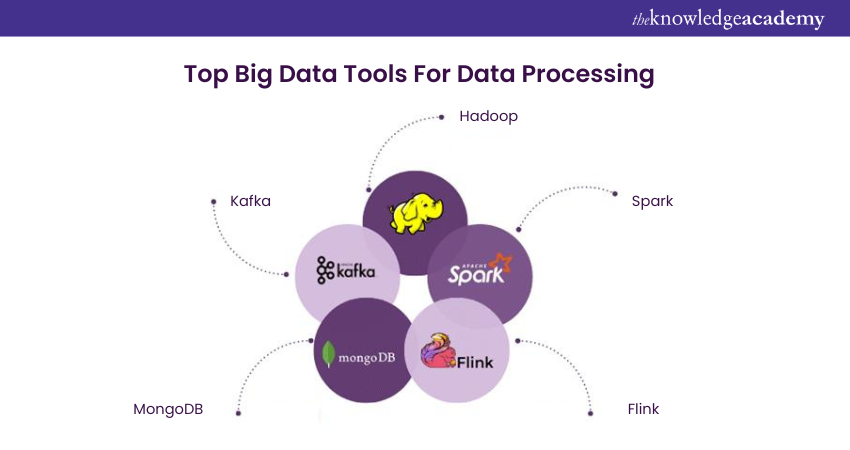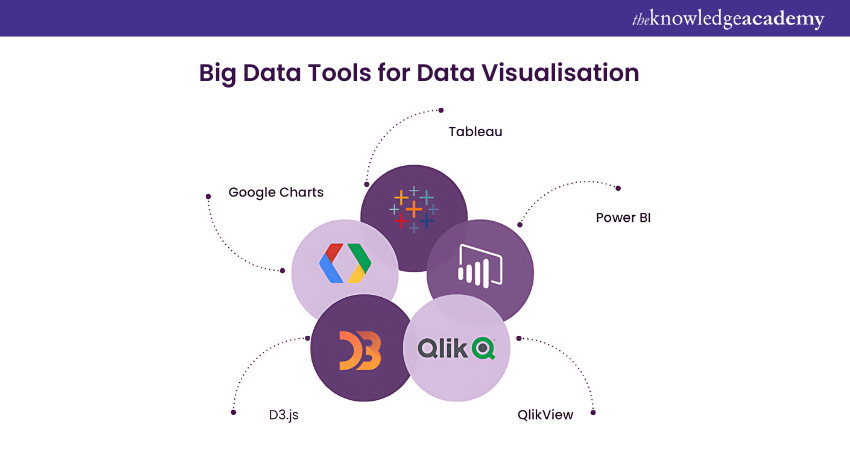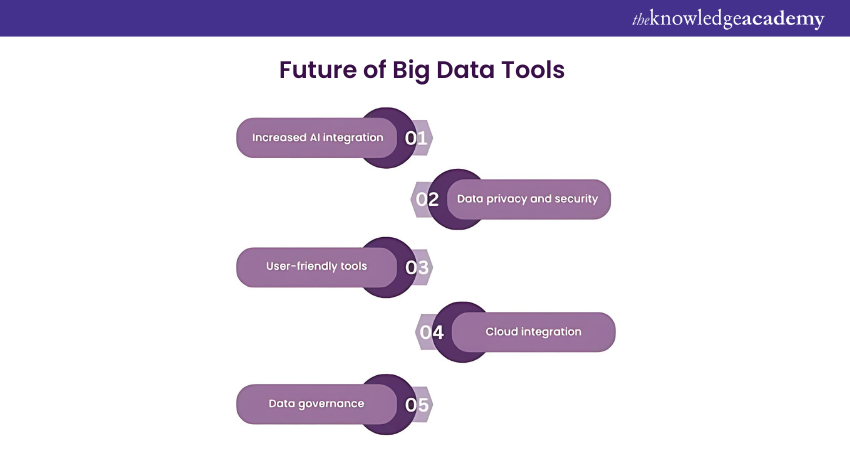We may not have the course you’re looking for. If you enquire or give us a call on 01344203999 and speak to our training experts, we may still be able to help with your training requirements.
Training Outcomes Within Your Budget!
We ensure quality, budget-alignment, and timely delivery by our expert instructors.

The Big Data market has soared astronomically from £131.82 billion in 2018 to £271.60 billion in 2024 (as per the latest report). This unprecedented rise opens a diverse array of opportunities for students aspiring to kickstart their careers in data science.
However, managing these colossal data sets demand robust and efficient Big Data Tools to turn raw data into golden insights. Catering to this surge in demand, we present our comprehensive blog, where we shall explore the top 10 best Big Data Tools harnessed by businesses across the globe. Let's ignite your exploration adventure with infinite data revolution knowledge at your fingertips, waiting to unleash!
Table of Contents
1) Understanding What are Big Data Tools
2) Top Big Data Tools for Data Processing
3) Top Big Data Tools for Data Visualisation
4) The Future of Big Data Tools
5) Conclusion
Understanding What are Big Data Tools
Big Data Tools are sophisticated software designed to handle, process, analyse, and visualise vast and complex amounts of data that aren’t possible through traditional data-processing software, such as spreadsheets or basic database management systems. Over the past decade, Big Data Tools have evolved rapidly, adapting to generated data's increasing volumes and complexity.
Initially, tools such as Hadoop were needed to deal with the sheer volume of data. However, as the diversity of data increased, more advanced tools, such as Spark, Kafka, and Flink, evolved. These not only manage large datasets but also provide real-time processing and analytics capabilities.
Today, the importance of Big Data Tools cannot be neglected. With businesses driven by data unprecedently, these tools offer crucial insights influencing strategic decision-making. From predictive analytics to customer behaviour understanding, they enable businesses to turn massive data sets into actionable intelligence for the organisation to achieve a competitive edge in the marketplace.
Top Big Data Tools For Data Processing
Big Data processing tools can handle, extract, and organise valuable insights from a vast array of data sets that aren’t possible through traditional databases. These tools provide a wide variety of applications in industries, such as real-time analytics, cloud data integration, business intelligence, and machine learning (ML).
These tools can process data at enormous speeds, accommodate various data types, and offer distributed processing for enhanced scalability. Further, these tools provide efficient data storage solutions through both batch and stream processing applications. They enable businesses to maximise their data utility. Integrated with data visualisation tools and supporting machine learning (ML) algorithms, they help drive informed decisions and competitive advantage.

1) Hadoop
Apache Hadoop is a trending open-source framework commonly used for the distributed processing of large amounts of data sets across various computer clusters. It is designed to scale up from one server to multiple machines while offering elevated degrees of fault tolerance. In this kind of environment, individual machine failures are not unusual, but the framework's application layer is built to handle such failures.
Hadoop comprises four primary components: the Hadoop Common with libraries and utilities, the Hadoop Distributed File System (HDFS) for data storage, Hadoop YARN for resource management, and Hadoop MapReduce for parallel processing. This flexibility and scalability make Hadoop one of the most robust Big Data Tools in the data analytics market.
2) Spark
Apache Spark is another distributed computing system designed for seamless computations, setting it apart in the Big Data processing domain. This open-source framework is able to achieve a high performance for both batch and interactive processing using a combination of in-memory storage and direct computation.
Spark's Core is an incredibly powerful processing engine that supports a wide array of tasks, including SQL queries, data streaming, Machine learning (ML), and graph processing. This valuable tool can be used alongside Hadoop to process data while also offering a high level of seamless processing for practical operations due to its capacity to perform computations in memory.
3) Flink
Apache Flink is an open-source platform designed for distributed stream and batch data processing. It can process streaming data in real time, indicating that it can provide insights quicker than systems that process data in batches.
Flink tool incorporates event time semantics and exactly once semantics, which sets it apart from many other data streaming systems. It also includes a complex event processing library (CEP) for detecting event patterns in streams and handling out-of-order events, resulting in an incredibly versatile tool for processing big data.
4) MongoDB
MongoDB is a source-available NoSQL database program designed to handle document-oriented storage. It comprises a flexible and versatile database that enables hassle-free storage of unstructured and semi-structured data. Unlike relational databases, which use tables to store data, MongoDB uses a document model, making it highly flexible, robust, and scalable.
In addition, it excels at working with big and complex data, partly due to its horizontal scaling capabilities. MongoDB distributes data across many servers, balancing workloads and allowing for scale-out growth. It also offers strong consistency, secondary indexes, and a powerful query language, making it an excellent choice for Big Data storage.
5) Kafka
Apache Kafka is a real-time, robust, highly reliable data streaming tool. It was originally developed on LinkedIn and is designed to handle high-performance real-time data feeds. It can process millions of messages per second, making it popular as a preferred tool for real-time analytics.
In addition, Kafka operates as a cluster that can span multiple servers for fault tolerance. This tool's storage layer is a massively scalable pub/sub message queue, which was structured as a distributed transaction log, making it highly valuable for enterprise infrastructures for data stream processing.
Try our Big Data Analytics & Data Science Integration Course today!
Big Data Tools for Data Visualisation
Big Data visualisation tools transform complex data into graphical representations to aid comprehension and enhance decision-making. Furthermore, these tools excel in transforming vast and varied data into accessible charts, graphs, and interactive dashboards, making the data more understandable and actionable.
These tools are used for discovering valuable trends, patterns, correlations, and outliers that might remain concealed in text-based data. Additionally, they enable real-time data visualisation, updating the graphics as new data arrives, which is pivotal for real-time analytics and prompt decision-making.
A few of these tools offer customisable features for personalised visualisations and possess capabilities to handle different types of data and sources. By utilising these tools, businesses can enhance their data interpretation and drive data-driven decision-making.

1) Tableau
Tableau has established itself as a frontrunner as a data visualisation tool with its user-friendliness and interactive functionality. This tool offers undue simplicity as it requires no coding experience and is quick to install. Users can create visualisations ranging from simple bar charts to complex geographical mapping and interactive dashboards by dragging and dropping in just a few clicks.
Tableau also excels in real-time data analysis and sharing capabilities. Its Data Server allows you to share data models, visualisations, calculations, and dashboards, ensuring your data remains consistent, accurate, and secure. Moreover, its integration capabilities with various data sources, including Hadoop and cloud-based data sources, enable flexible approaches to data visualisation.
2) PowerBI
Power BI is a set of analytics tools that provide interactive visualisations with self-service business intelligence capabilities. This tool provides non-technical business users with tools for aggregating, analysing, visualising, and sharing data.
The benefit of Power BI is that its dashboard can be customised to meet the exact needs of any enterprise. It allows users to convert data from various data sources into insightful visuals and reports. It's also deeply integrated with other products from the Microsoft ecosystem, such as Azure and SQL Server, which facilitates a smoother data analytics experience.
Learn data visualisation in detail with our Data Science Analytics Course today!
3) QlikView
QlikView, part of Qlik's software suite, is highly reliable and capable of its unique Associative Data Indexing Engine. This feature enables users to discover hidden trends and patterns that may not be applicable in traditional hierarchical or query-based data models.
QlikView also uses an in-memory data model, enabling the tool to quickly process data. This tool's pro is that users can develop and deploy analytic apps without needing professional development skills, enabling them to make meaningful decisions. In addition, its robust data discovery and guided analytics capabilities aid in creating an all-encompassing view of the data landscape.
4) D3.js
D3.js, or Data-Driven Documents, is a flexible JavaScript library for creating data visualisations. It leverages the full capabilities of modern web standards, allowing you to bind arbitrary data to a Document Object Model (DOM) and apply data-driven transformations to the document.
This library enables the creation of comprehensive and versatile visualisation components, promoting a data-driven approach to DOM manipulation. While D3's functional style encourages code reuse, it provides the building blocks rather than a predefined collection of components and plugins. With D3.js, you have complete control over your visualisation features, but it requires a solid understanding of JavaScript to use effectively.
5) Google Charts
Google Charts is a JavaScript-based web service by Google that provides a graphical representation of data.Owing to its simplicity, it has a wide array of applications, from simple scatter plots to hierarchical tree maps and live Google Sheets connectivity.
Google Charts can easily read live data from a variety of data sources, such as Google Spreadsheets, SQL databases, and Google's Fusion Tables. One of the remarkable features is its cross-platform capability, making it highly versatile and easy to integrate into various applications. Although it's not as powerful as some of the other tools described in this blog, yet Google Charts' simplicity makes it an excellent starting point for basic data visualisation needs.
Learn to manage Big Data efficiently with our Hadoop Administration Training!
Future of Big Data Tools
Big Data Tools are set to play an increasingly critical role in our digital futuristic ecosystem. As data generation continues to accelerate and diversify, these tools will constantly evolve, offering more sophisticated capabilities for handling, analysing, and visualising data.

1) Increased Intelligence Integration
One of the primary areas of development lies in the incorporation of machine learning (ML) and Artificial Intelligence (AI) with popular Big Data Tools. As ML and AI technologies advance, they offer the ability to navigate through massive datasets to find patterns, attain predictions, and drive robust decision-making.
The evolution of Big Data Tools is expected to witness more sophisticated applications of ML and AI, making way for predictive analytics and automated decision-making capabilities. By leveraging these technologies, businesses can handle anticipated market trends and customer behaviours seamlessly.
2) Heightened Data Privacy and Security
Data privacy and security challenges grow in tandem with the volume and variety of data sources. Personal and sensitive data are more commonly processed and stored, raising the questions on data protection. The future Big Data Tool will need to incorporate stronger and more advanced data security features, including improved encryption and anonymisation techniques.
3) Rise of User Friendly Tools
Data-driven decision-making is growing in prominence across businesses and is creating a surge in demand for intuitive and accessible big data tools. As organisations strive to access data, the future will see the development of more user-friendly Big Data Tools designed for non-technical customers. Such tools will enable a broader range of professionals to interact with data, fostering a more inclusive, data-driven culture within organisations.
4) Increased Cloud Integration
Scalability, cost-effectiveness, and flexibility make it an excellent choice for Big Data processing and storage. With time, we will see an increase in cloud-based Big Data Tools, allowing businesses to handle data more efficiently and access it from anywhere, at any time. This evolution is likely to continue to disrupt traditional data storage and processing methods, making way for a more efficient and agile data management approach.
5) Emphasis on Data Governance
As businesses collect, process, and utilise more data, data governance will be increasingly emphasised. This involves managing data quality, ensuring data accuracy, maintaining data lineage, and complying with data regulations. Big Data Tools will play a pivotal role in these governance processes, requiring features that enable complete data management and compliance.
Conclusion
The evolution of Big Data Tools is a never-ending journey that will continue to develop in the landscape of massive digitisation. These tools go beyond just shaping the modern industries but also paving the way for futuristic innovation. With time, they will continue to empower business strategies, enable effective decision-making, and drive unprecedented technological advancements.
Learn about Hadoop framework in detail with our Big Data Architecture Training!
Frequently Asked Questions

The four types of Big Data technologies are data storage (like HDFS), data processing (like Apache Spark), data analytics (like TensorFlow), and data visualisation (like Tableau and PowerBI).

Yes, Tableau is indeed a Big Data Tool that integrates well with various big data platforms and databases.

The Knowledge Academy takes global learning to new heights, offering over 30,000 online courses across 490+ locations in 220 countries. This expansive reach ensures accessibility and convenience for learners worldwide.
Alongside our diverse Online Course Catalogue, encompassing 19 major categories, we go the extra mile by providing a plethora of free educational Online Resources like News updates, Blogs, videos, webinars, and interview questions. Tailoring learning experiences further, professionals can maximise value with customisable Course Bundles of TKA.

The Knowledge Academy’s Knowledge Pass, a prepaid voucher, adds another layer of flexibility, allowing course bookings over a 12-month period. Join us on a journey where education knows no bounds.

The Knowledge Academy offers various Big Data and Analytics Training, including Big Data Analytics & Data Science Integration Course, and the Big Data Architecture Training. These courses cater to different skill levels, providing comprehensive insights into Methods and Tools for Data Collection.
Our Data, Analytics & AI Blogs cover a range of topics related to data science, machine learning, and business intelligence, offering valuable resources, best practices, and industry insights. Whether you are a beginner or looking to advance your data analytics skills, The Knowledge Academy's diverse courses and informative blogs have got you covered.
Upcoming Data, Analytics & AI Resources Batches & Dates
Date
 Hadoop Big Data Certification
Hadoop Big Data Certification
Thu 23rd Jan 2025
Thu 20th Mar 2025
Thu 22nd May 2025
Thu 17th Jul 2025
Thu 18th Sep 2025
Thu 20th Nov 2025







 Top Rated Course
Top Rated Course



 If you wish to make any changes to your course, please
If you wish to make any changes to your course, please


